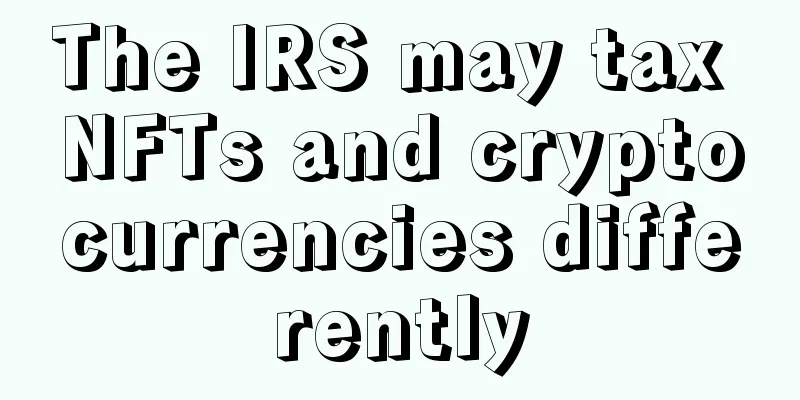The IRS may tax NFTs and cryptocurrencies differently

|
In the digital realm, all taxes are not necessarily the same. Amid the NFT craze, wealthy owners may pay different tax rates on the growth of their holdings. Specifically, investors who sell NFTs may need to pay a federal tax rate of up to 31.8% on any gains. By comparison, the appreciation of Bitcoin, Ethereum and other digital coins is subject to a maximum tax rate of 23.8%. That’s because NFTs may be collectibles for tax purposes, which have higher top tax rates on capital gains than assets like stocks, bonds and cryptocurrencies. The IRS doesn’t explicitly say NFTs are collectibles, which leaves some room for interpretation. But many tax experts believe they clearly fall into the same group as art, antiques, gemstones, metals, stamps and coins — which the IRS labels as tangible collectibles that should be subject to higher tax rates. Jeffrey Levine, a St. Louis certified financial planner and accountant at Buckingham Wealth Partners, said of NFTs: “I don’t understand how it’s not a collectible.” The boom of NFTs and cryptocurrencies NFTs are essentially one-of-a-kind digital assets that can extend beyond art to things like tweets and GIFs. The NFT market has grown rapidly. According to NonFungible.com, sales reached $6 billion in the third quarter of 2021, an increase from about $22 million the previous year. In March, Christie's became the first major action institution to sell an NFT-based virtual artwork, which was sold for $69 million. Additionally, the number of NFT buyers has also swelled - from 19,000 in the same period of 2020 to about 260,000 in the third quarter of last year. Similarly, the recent cryptocurrency craze has also enveloped investors. According to a 2021 CNBC survey, more than 10% of American adults own cryptocurrencies, and nearly two-thirds of them have purchased cryptocurrencies in the past year. Capital gains tax Investors pay capital gains taxes when they sell an asset. They are levied on any appreciation that has accumulated since purchase. The IRS generally taxes long-term capital gains at a maximum federal tax rate of 20%. Long-term gains apply to cryptocurrencies and other assets owned for more than a year. In 2021, singles with taxable income over $445,850 pay the top tax rate of 20%. Wealthier individuals are also subject to a 3.8% surtax on investment income, which kicks in when a single person makes more than $200,000 -- bringing the total federal tax rate on capital gains to 23.8%. However, collectibles - often owned by the super-rich - are subject to a different tax regime. Their long-term capital gains are taxed at the higher federal top rate (28%), which also kicks in at different income levels. At the same time, a 3.8% surtax also applies. As a result, a wealthy NFT owner could owe as much as 31.8% federal tax on the value added. “If you have art or classic cars, for example, then you’re (probably) an ultra-high net worth individual, which is why the IRS has this special long-term capital gains tax rate,” said Shehan Chandrasekera, director of accounting and tax at CoinTracker. How taxes work Troy Lewis, associate professor of accounting and taxation at Brigham Young University, said it's confusing that different income thresholds apply to capital gains taxes on collectibles. Investors pay ordinary income tax on the appreciation of collectibles, up to 28%. "If your ordinary tax rate is less than 28%, you pay your ordinary tax rate," Lewis, who also owns an accounting firm in Draper, Utah, said of the collection. A single taxpayer in the 22 percent tax bracket -- which last year applied to incomes of about $41,000 to $86,000 -- would pay the top rate of 22 percent on the long-term appreciation of a collectible. Conversely, people in the 37 percent tax bracket — which applies to income over $524,000 — would see their collectibles tax rate capped at 28 percent. In both examples, taxpayers would be taxed at a higher rate on the appreciation of NFTs than on cryptocurrencies. Unresolved issues While the prevailing thought among tax practitioners seems to be that NFTs are collectibles, that’s not necessarily the end of the issue. The IRS classifies art and other tangible personal property as collectibles. NFTs likely fall into the "one-say" category, placing them in the collectible category; but NFTs are also intangible - placing them in a murky area of the tax code. “Is it a collectible?” Lewis said. “That’s not well settled yet because it’s still a new field. |
<<: Will the increase in USDT issuance drive Crypto inflation?
>>: What does Chinese law say about the theft of digital collections?
Recommend
Is it good for a woman to have a mole on her right chin?
Some people say that a mole on the chin represent...
How does a person who is destined to be lonely and unmarried look like?
How does a person who is destined to be lonely an...
Is it good to have a mole above the left eyebrow? What are the consequences?
Everyone has moles, and depending on the location...
Mole on arm
Mole on arm Mole on the outer side of the upper a...
"Requirements for the Cleanup and Rectification of Bitcoin Trading Platforms" was exposed, and insiders said the document was true
Recently, the WeChat public account "Lutoush...
Caiyun Weekly Report: 20210228 bitfinex pays fine, EIP-1559 causes controversy
I wish you all a happy Lantern Festival. The main...
What are the characteristics of people with medium noble appearance from the perspective of face
According to the current national official system...
What kind of faces pay attention to dining etiquette?
Sometimes, many aspects of etiquette cannot be ig...
The listed company lost more than 100 million yuan in "cryptocurrency speculation"
Meitu, which purchased cryptocurrencies in a high...
Do women with dragon-eye and phoenix-eye have good luck? What does this facial feature represent?
Do women with dragon-eye and phoenix-eye have goo...
What does a woman's longevity look like?
Presumably everyone wants to live a long life, so...
Why do people with abdominal prolapse become prosperous?
Why do people with abdominal prolapse become pros...
PinkCoin, a digital currency based on global diamond reserves, will be launched on January 18
Original title: PinkCoin, the first cryptocurrenc...
In-depth view: Thinking about the survival of mining machine manufacturers in the new cold war environment
Preface I have been in the Bitcoin mining industr...
What kind of facial features are there?
To put it simply, a face that brings bad luck to ...









